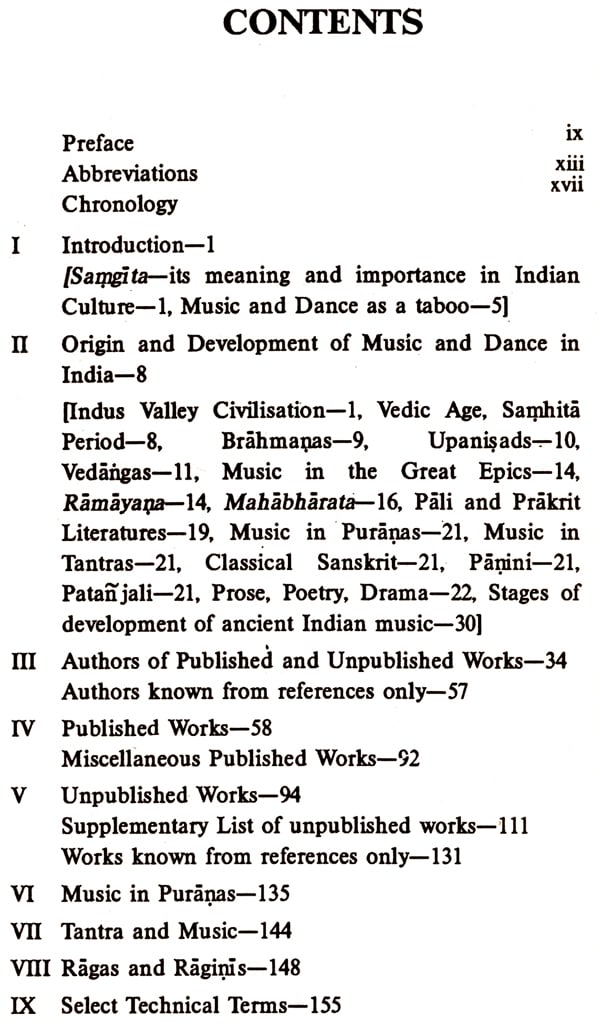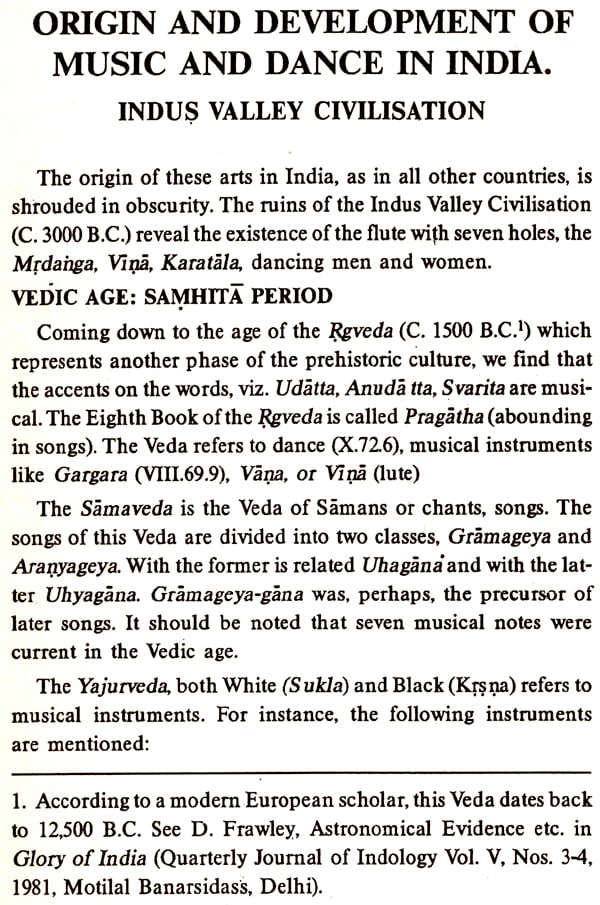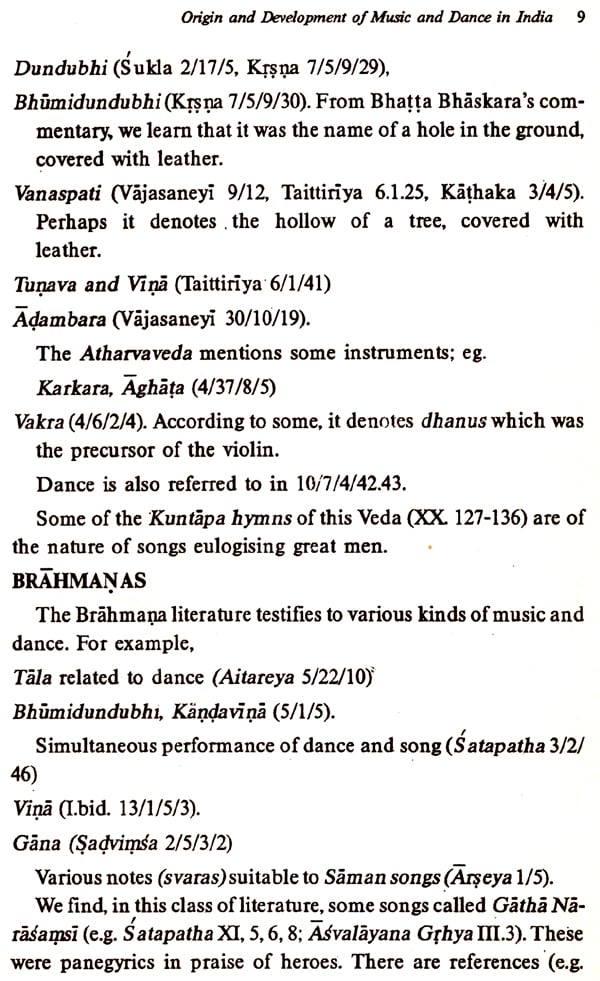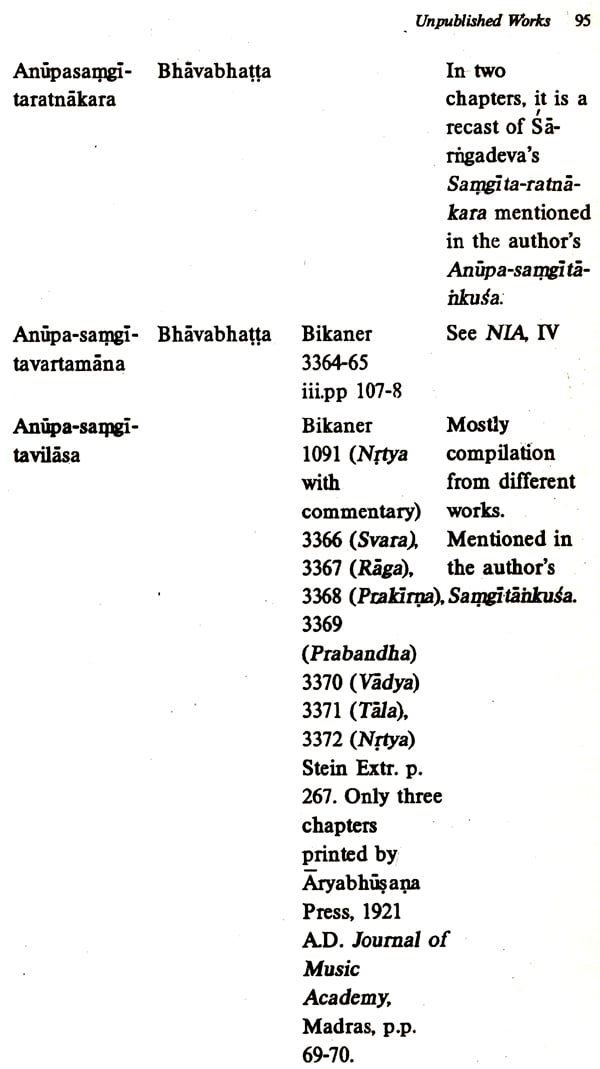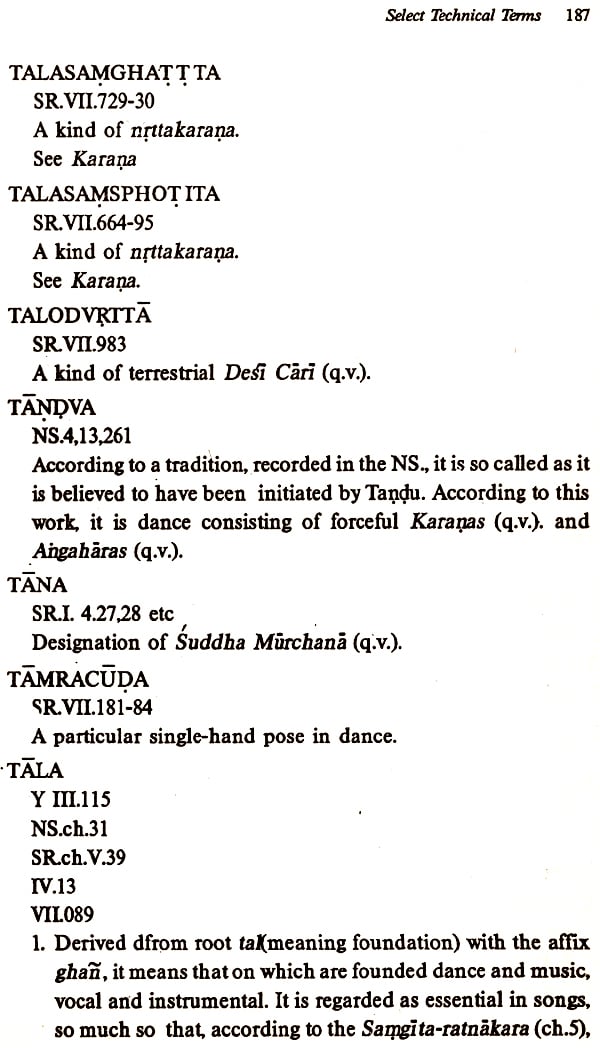
A Companion to Indian Music and Dance - Spanning a Period of Over Three Thousand Years and Based Mainly on Sanskrit Sources (An Old Book)
Book Specification
| Item Code: | NAS163 |
| Author: | Suresh Chandra Banerji |
| Publisher: | Sri Satguru Publications |
| Language: | English |
| Edition: | 1990 |
| ISBN: | 8170302404 |
| Pages: | 308 |
| Cover: | HARDCOVER |
| Other Details | 9.00 X 6.00 inch |
| Weight | 460 gm |
Book Description
This unique book, the first of its kind, gives a succinct account of the origins and development of music and dance since Vedic times. Besides highlighting the prominent authors and works, it provides a key to the hidden treasure of un-published texts. The Glossary of technical terms is illuminating. The Appendices deals, inter alia, with Indian and foreign music, non-Aryan influences etc. The bibliography is exhaustive and upto-date.
S. C. Banerji is a retired professor, working on indology, for nearly half a century, has produced a number of works on different aspects of it.
Music and dance are no longer the luxury of the aristocratic people. Nor are these tabooed in the society at large. Interest in these arts is widespread. These have been included in the curricula of academic institutions up to the Universities. Musicologists do not rest content with merely learning the literature on music and dance. A spirit of research has been instilled into them. Even some foreign enthusiasts are evincing interest in these ancient arts of India.
Indian tradition of music and dance harks back to hoary antiquity, centuries before the dawn of history. Sanskrit texts on these arts are legion. Of them, a very small number has seen the light of day. The vast majority of the texts still lie buried in manuscripts not only in India, but also abroad.
Some works on the history of these Indian arts have been written. Svami Prajaanananda's History stands as a monument to his love of music and profound erudition. It is, however, beyond the ken or means of many a lover of music, particularly of the student community.
The motives of presenting the panorama of Indian music and dance in a succint form, and of stimulating a spirit of research have urged the preparation of the present work.
First of all, we have pointed out the exalted position accorded to music since early times excepting a coterie of writers on Smrti literature. Then, we have set forth, in a nutshell, the origin and development of these arts ever since the Vedic period. In one chapter, we have. Given brief accounts of the texts published hitherto. With an eye to the needs of the researchers, a chapter has been devoted to the unpublished works. To give an idea of the magnitude of this literature, we have added a note also on the authors and works known from references only. A separate chapter has been written on the authors of those prominent works which are available in print or in manuscripts. Under each author, we have given as much information about his personal history and date as available materials permit. In one chapter, we have discussed the relation between Indian and foreign music.
The young learner and the general reader find the technical terms and jargon stumbling blocks in their way to the study of the nusicological lore. For facilitating the study of the original texts, we have explained the important technical terms, and noted the references mainly to the klayagastra and the Sanigitadarpana.
The following interesting matters, relating to music, have been dealt with in the appendices: influence of nature on music and dance, poetic flashes in literature on musicology. In order to bring out the composite nature of Indian music we have added an appendix on non-Aryan influence on it. Incidentally, we have laid down how music serves as a means of national integration. In one appendix. We have dealt with the influence of Indian music in several countries of the Orient and the Occident. One appendix has been devoted to a discussion on the basic differences between Indian and western music. The important subject of Mela is the subject matter of a separate appendix. The systems of north Indian and South Indian music have been compared in one appendix. Although this work is mainly based on Sanskrit sources, yet we have given a brief account of the contribution of some medieval performing artistes; because what they did and left for posterity is the warp and woof of Indian music in general and north Indian music is particular.
Finally, we have added an up-to-date bibliography of the important texts, translations and studies in different languages of India and foreign countries.
The author's labours will be amply rewarded if this small work serves the purpose for which it is intended. Suggestions for its improvement will be gratefully received.
**Contents and Sample Pages**
